Every year, UNESCO adds properties of amazing cultural and natural significance to its list of protected sites. The voting and induction ceremony couldn’t take place last year due to the pandemic, so this year UNESCO considered nominees from both 2020 and 2021 — adding a total of 34 new heritage sites to its list. The final selection was certainly worth the wait, with new additions ranging from prehistoric Russian petroglyphs to a Modernist German artist colony. As travel is finally opening up again, the new list of UNESCO heritage sites provide plenty of inspiration for your next trip.
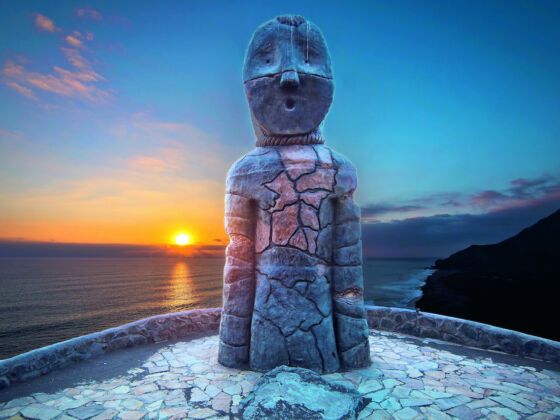
The 34 Newest UNESCO Heritage Sites and Why You Should Visit Them
1. Arslantepe Mound
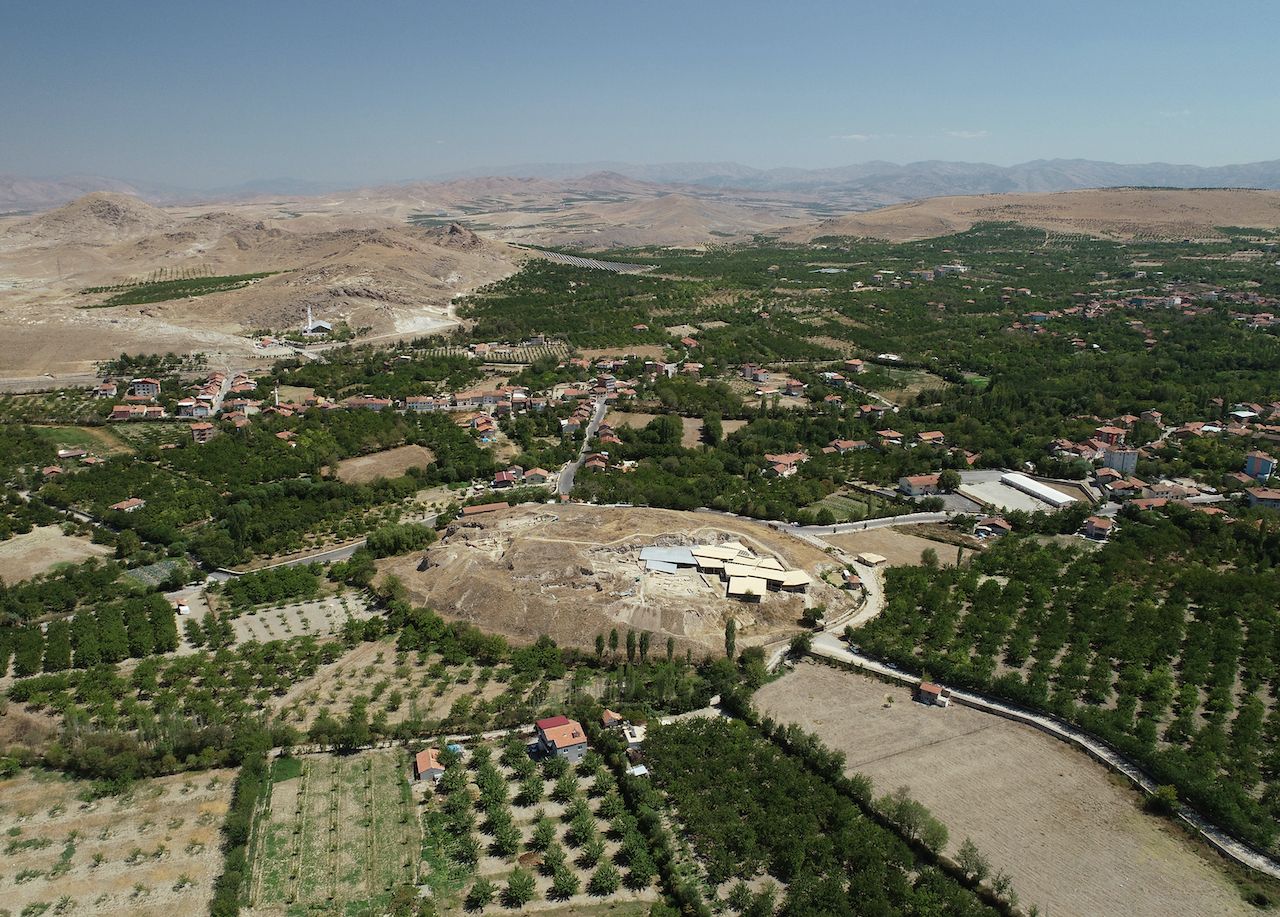
Photo: Roberto Ceccacci/MAIAO/UNESCO
The Arslantepe Mound is located in the Eastern Anatolia region of Turkey, in the province of Malatya. It’s technically a tell, i.e. an archaeological site consisting of remains from multiple generations who settled in the same place. Experts estimate that Arslantepe has seen human occupation since at least the sixth century BCE up until the late Roman period. There are many impressive aspects of the site, including Uruk adobe ruins from the fourth century BCE, ornate lion sculptures from the Hittite civilization, and some of the earliest swords yet discovered.
2. Chankillo Archaeoastronomical Complex, Peru
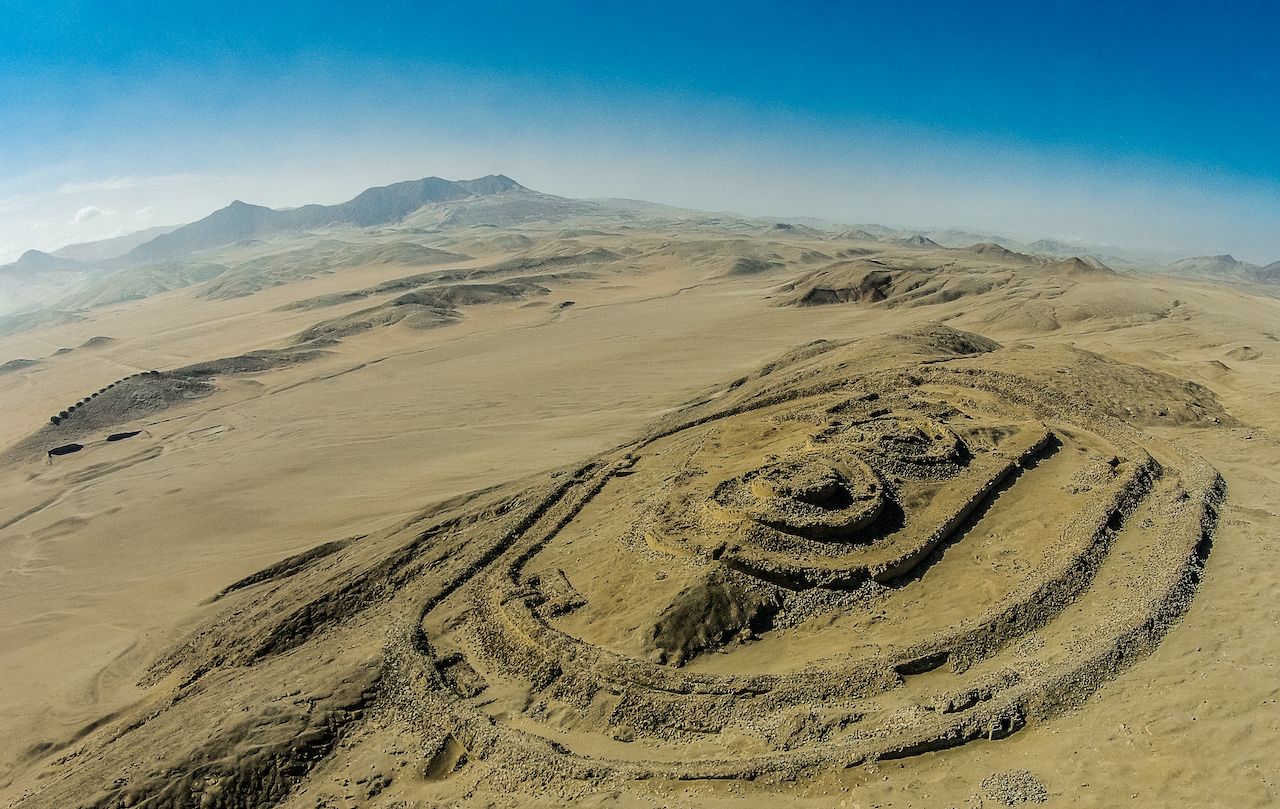
Photo: Municipalidad Provincial de Casma/IDARQ/UNESCO
This prehistoric site (250-200 BCE) is located in Peru’s Casma Valley, roughly 240 miles up the coast from Lima. Here, man-made constructions complement naturally-occurring features to form a primitive calendar (like a sophisticated, giant sundial). Specific elements include a triple-walled hilltop complex, two building complexes, and a series of 13 cuboidal towers. Archeologists believe that the center of the site was likely used by a solar cult for rituals and ceremonies.
3. Colonies of Benevolence, Belgium and the Netherlands
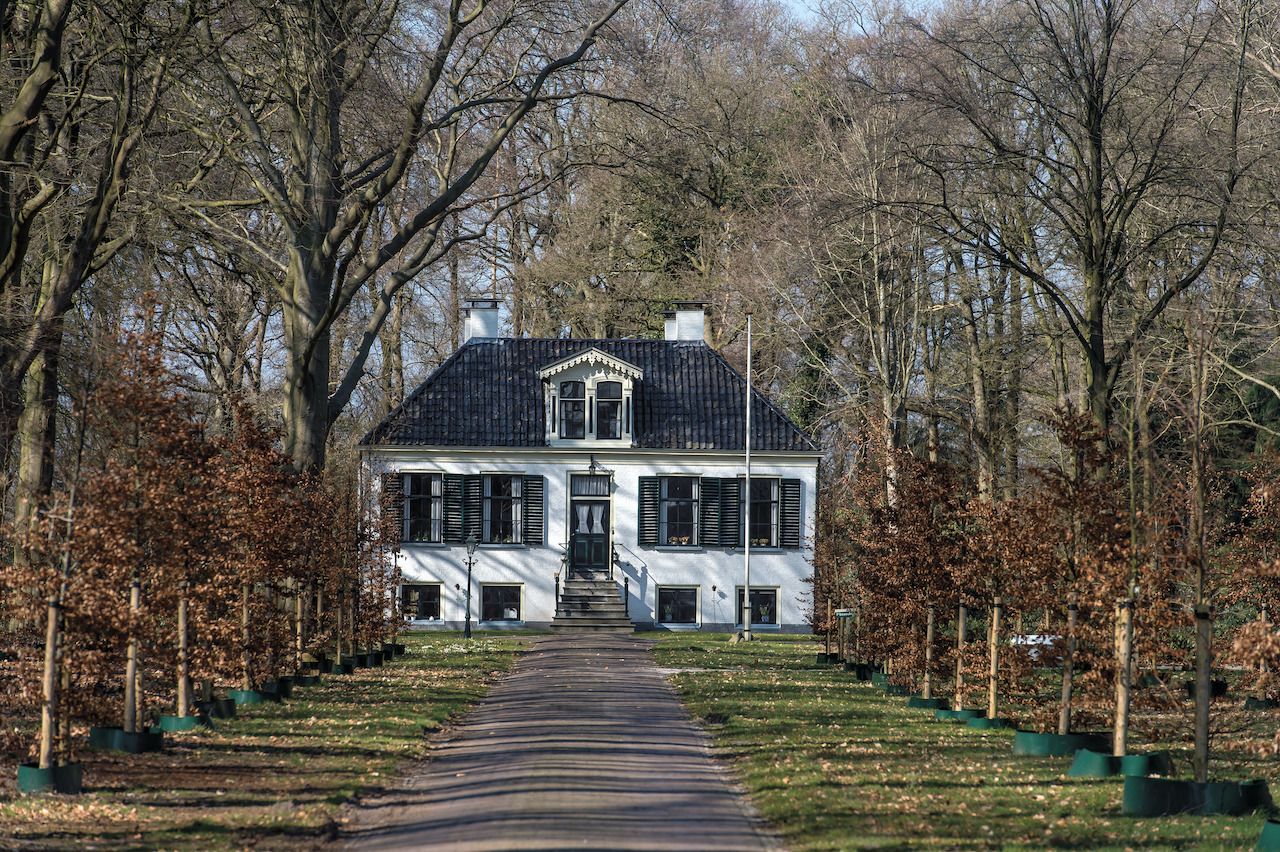
Photo: James van Leuven/Province of Drenthe on behalf of all nomination partners/UNESCO
This site consists of one colony in Belgium and three in the Netherlands. Established in 1818, these complexes were created with the goal of alleviating urban poverty through remote agricultural production. The colonies’ small farms were insufficient in achieving their aims, so the Society of Benevolence sought a secondary source of revenue by contracting with the state to settle orphans, beggars, and vagrants in the colonies, who then worked in the farms under guarded supervision.
4. Cordouan Lighthouse, France

Photo: Gilles Vilquin/DRAC Nouvelle-Aquitaine/UNESCO
The Lighthouse of Cordouan is located off the coast of France, at the mouth of the Gironde estuary. Designed in the late 16th century by engineer Louis de Foix, it was built from white limestone and decorated with ornate pilasters, columns, and gargoyles. The lighthouse underwent significant modifications in the late 18th century, mainly to increase its height and improve the light chamber’s signal emitted. These changes are exemplary of other scientific advancements within the time period, making the Lighthouse of Cordouan a totem of artistic and technical progress. The Cordouan Lighthouse is the last inhabited lighthouse in France and the second lighthouse to get UNESCO status.
5. The Danube Limes (Western Segment), Austria, Germany, Slovakia
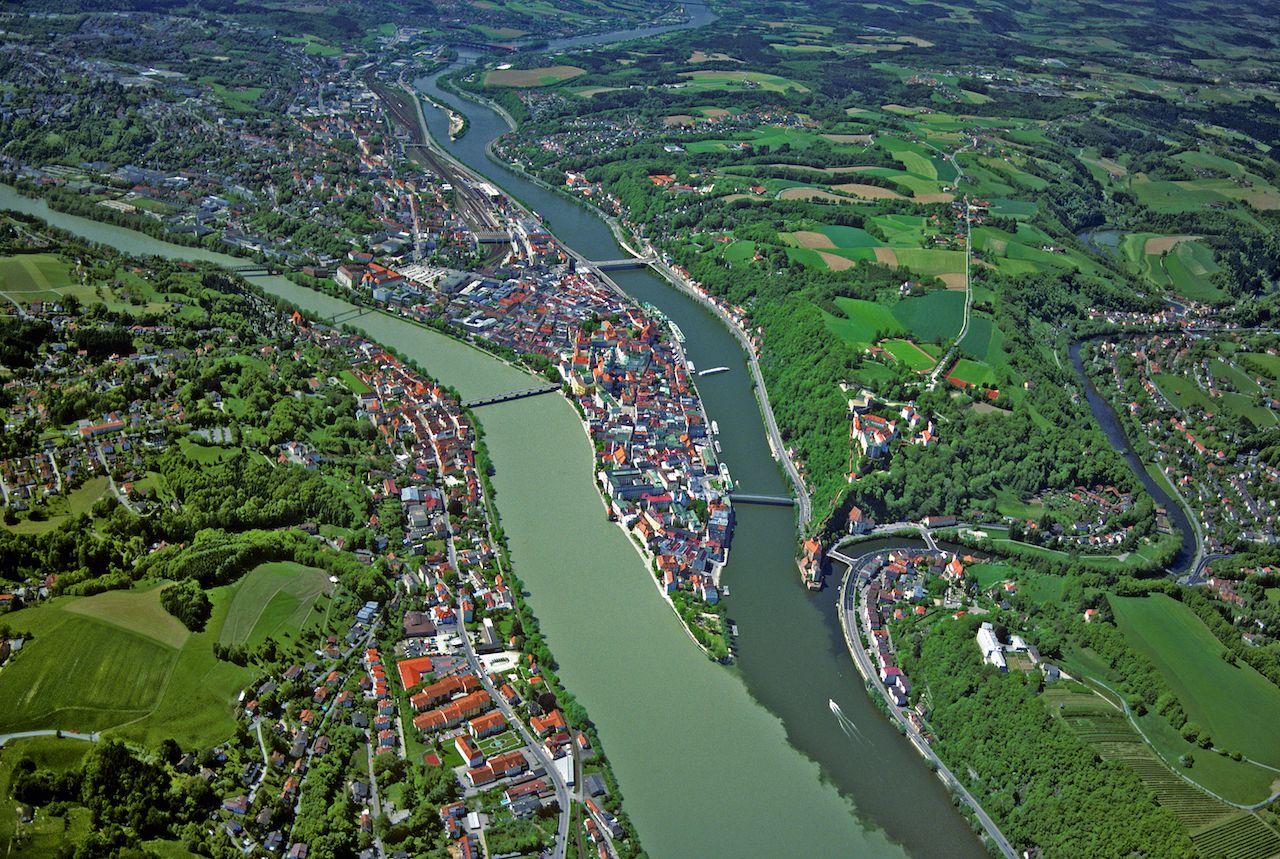
Photo: K. Leidorf/BLfD/UNESCO
This site spans roughly 350 miles across what was the Roman Empire’s Danube Frontier, in present-day Austria, Germany, and Slovakia. The Danube Limes contain significant elements of infrastructure such as roads, watchtowers, and legionary fortresses; all of which contributed to the security of the Roman border in the first through the fifth century CE.
6. Kakatiya Rudreshwara (Ramappa) Temple, India
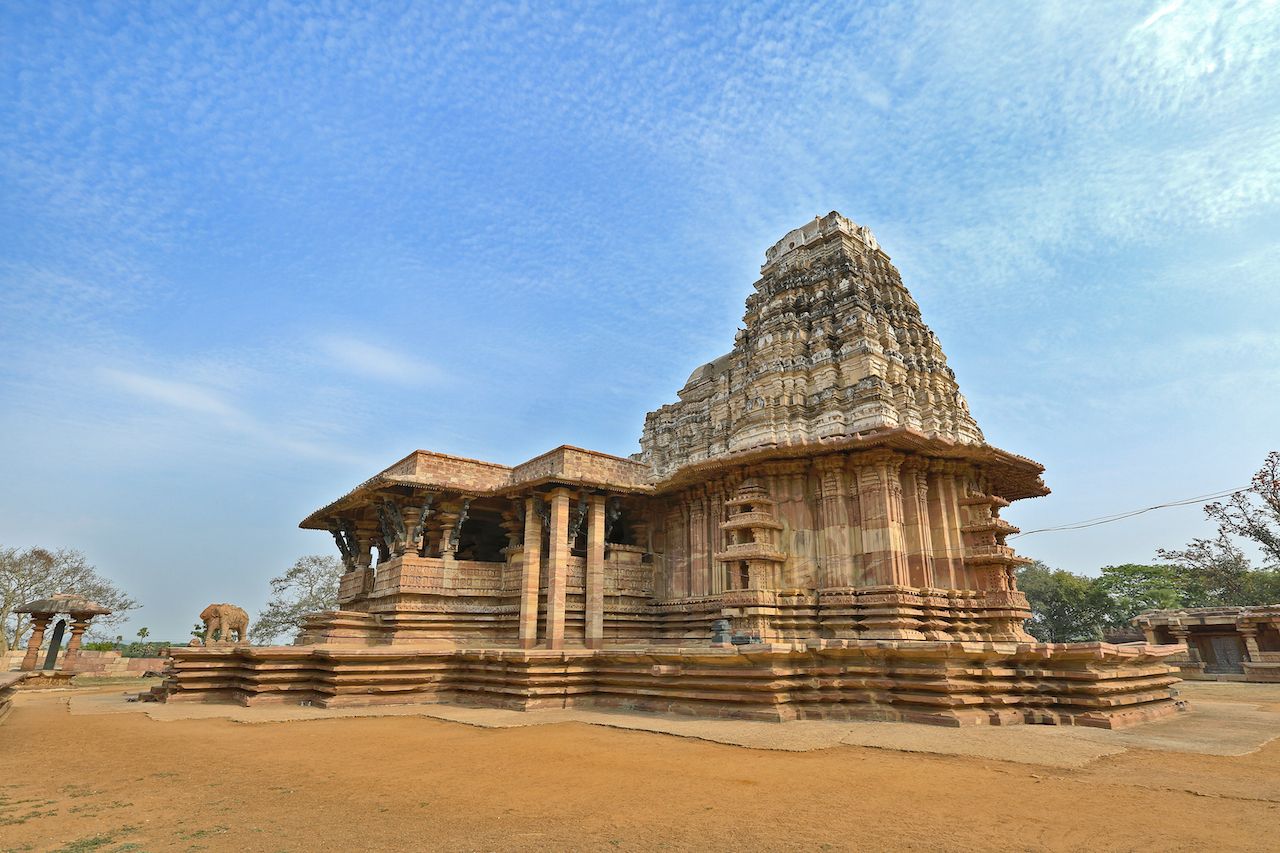
Photo: ASI/UNESCO
Rudreshwara, also known as Ramappa Temple, is located in the village of Palampet, India. It’s the main Shiva temple in a walled complex, constructed during the Kakatiyan period (1123-1323 CE) over roughly 40 years. The temple itself is made of sandstone, with decorative beams and pillars of carved granite and dolerite. The aesthetics of Rudreshwara reflect the region’s specific dance customs and Kakatiyan culture.
7. Mathildenhöhe Darmstadt, Germany

Photo: Nikolaus Heiss/UNESCO
The Darmstadt Artists’ Colony on Mathildenhöhe (west-central Germany) was built in 1897 as a center for emerging reform movements in architecture, arts, and crafts. The colony’s artist members designed most of the buildings as experimental models in early modernist live/work environments. Today, it serves as a testimony to early modern architecture, urban planning, and landscape design, all of which were influenced by the Arts and Crafts movement and the Vienna Secession.
8. Padua’s fourteenth-century fresco cycles
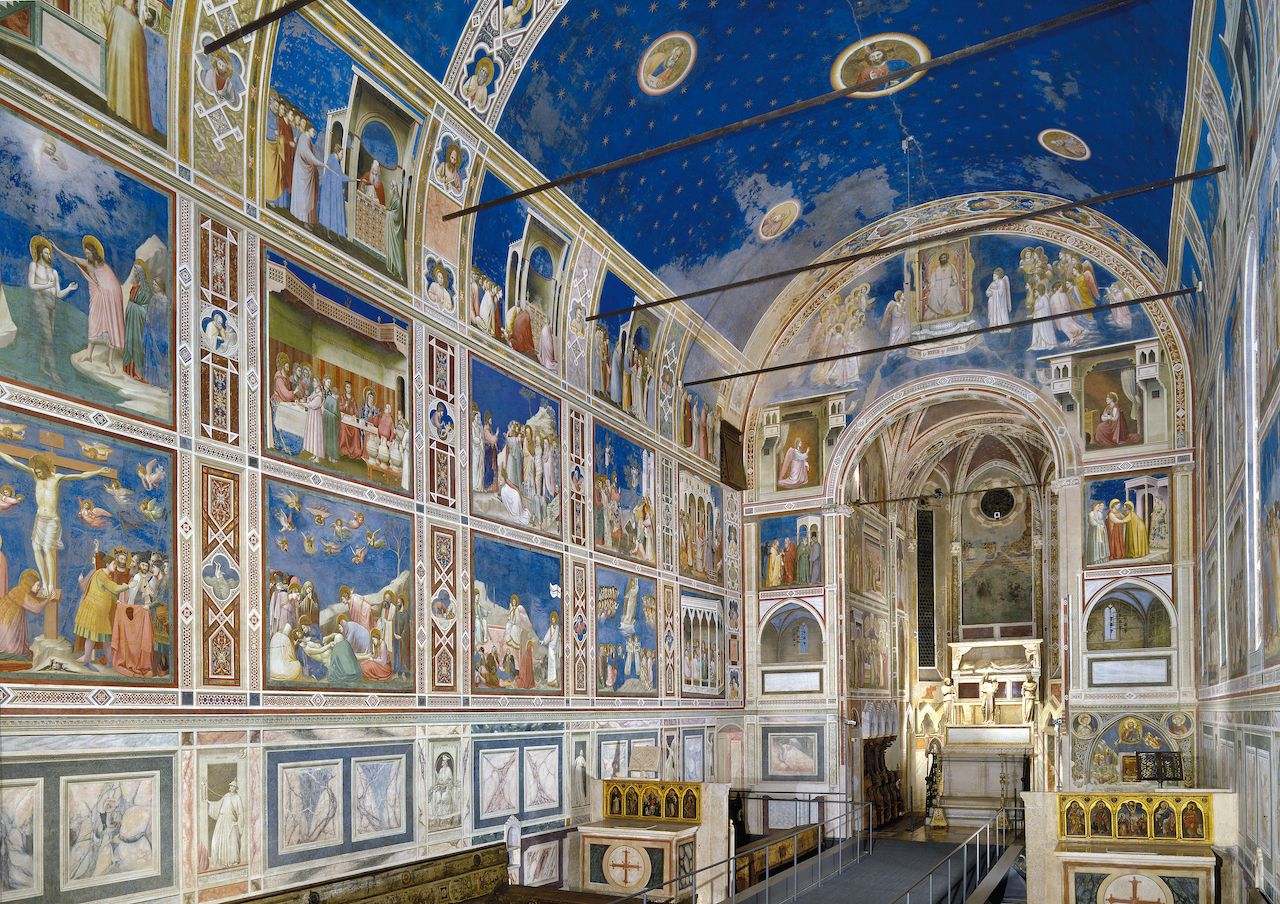
Photo: Comune di Padova, Gabinetto Fotografico dei Musei Civici di Padova/Comune di Padova Settore Cultura, Turismo, Musei e Biblioteche/UNESCO
This site spans eight religious and secular building complexes, all within the historic walled city of Padua, Italy. Each site contains prime examples of 13th-century fresco cycles. A fresco is a technique of mural painting wherein the artist quickly applies earth pigments to damp plaster. A fresco cycle is a series of individual fresco paintings, typically meant to convey a narrative or particular theme. UNESCO’s selection includes Giotto’s Scrovegni Chapel (Arena Chapel), commonly considered one of the most important works of Western art.
9. Paseo del Prado and Buen Retiro, a landscape of Arts and Sciences, Madrid

Photo: Karol Kozlowski/Shutterstock
This 200-hectare cultural landscape is located in the heart of Madrid, Spain. Specifically, the site includes the prestigious, tree-lined Paseo del Prado Avenue, several adjacent fountains and buildings, and the gardens of what was Buen Retiro Palace. The significance of this site comes from its cultural and conceptual connotations: Together, the buildings embody 18th-century Spain’s utopic vision of urban space and development.
10. Quanzhou: Emporium of the World in Song-Yuan China
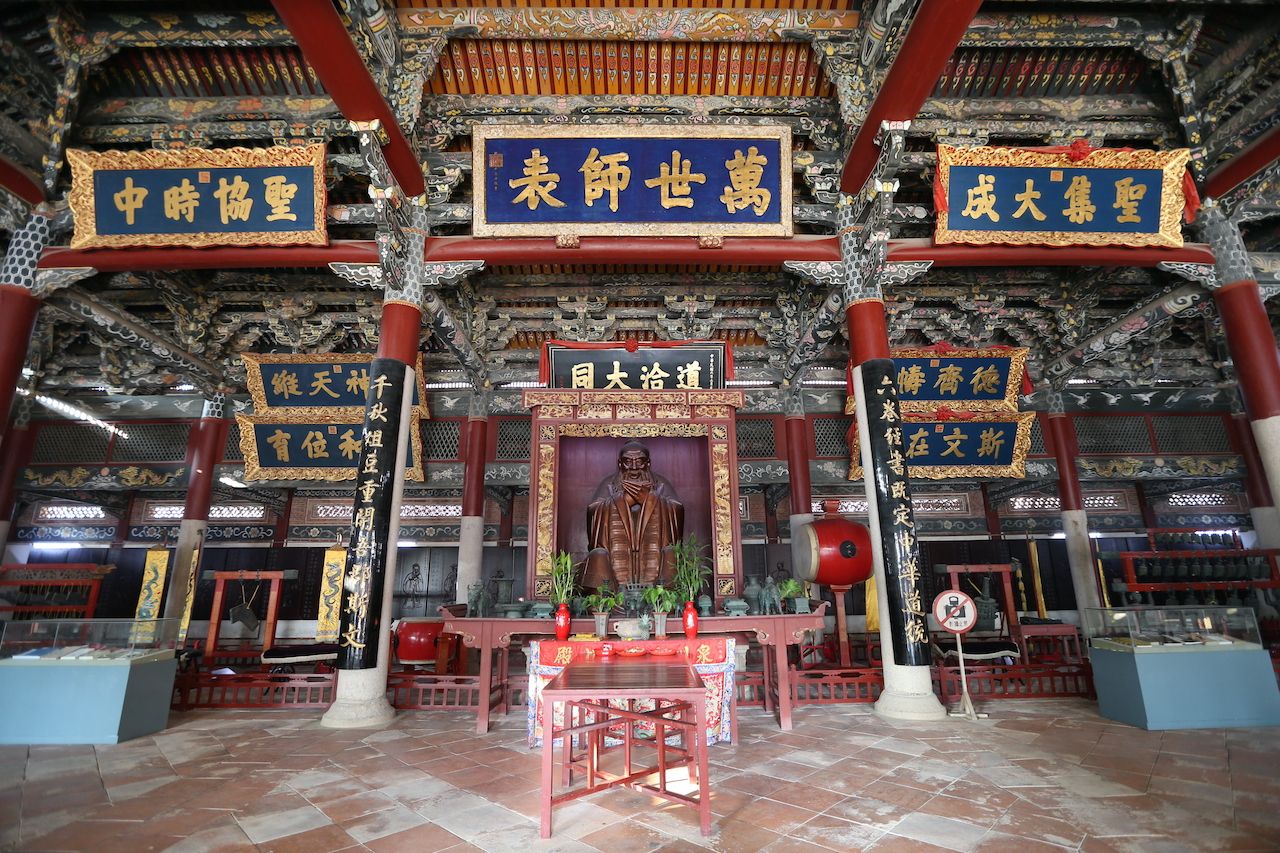
Chen Yingjie/Quanzhou maritime Silk Road World heritage Nomination Center/UNESCO
Quanzhou, also known as Zayton, served a prime role in 10th-14th century China’s maritime trade. This serial site encompasses several buildings that attest to this significance: the 11th-century Qingjing Mosque, Islamic tombs, multi-purpose stone docks for commerce and defense, ancient bridges, and more.
11. Roșia Montană Mining Landscape, Romania

Photo: Radu Salcudean/UNESCO
This site in western Romania features the most significant, extensive, and technically diverse underground Roman gold mining complex yet uncovered. Over a span of roughly 170 years (starting in 106 CE), the Romans extracted approximately 500 tonnes of gold from the site, requiring the development of elaborate engineering works, water wheels, and underground infrastructure. Archaeologists have also excavated wax-coated wooden tablets from this site, which provide extensive details about the legal, socioeconomic, demographic, and linguistic implications of Roman mining.
12. Sítio Roberto Burle Marx, Brazil
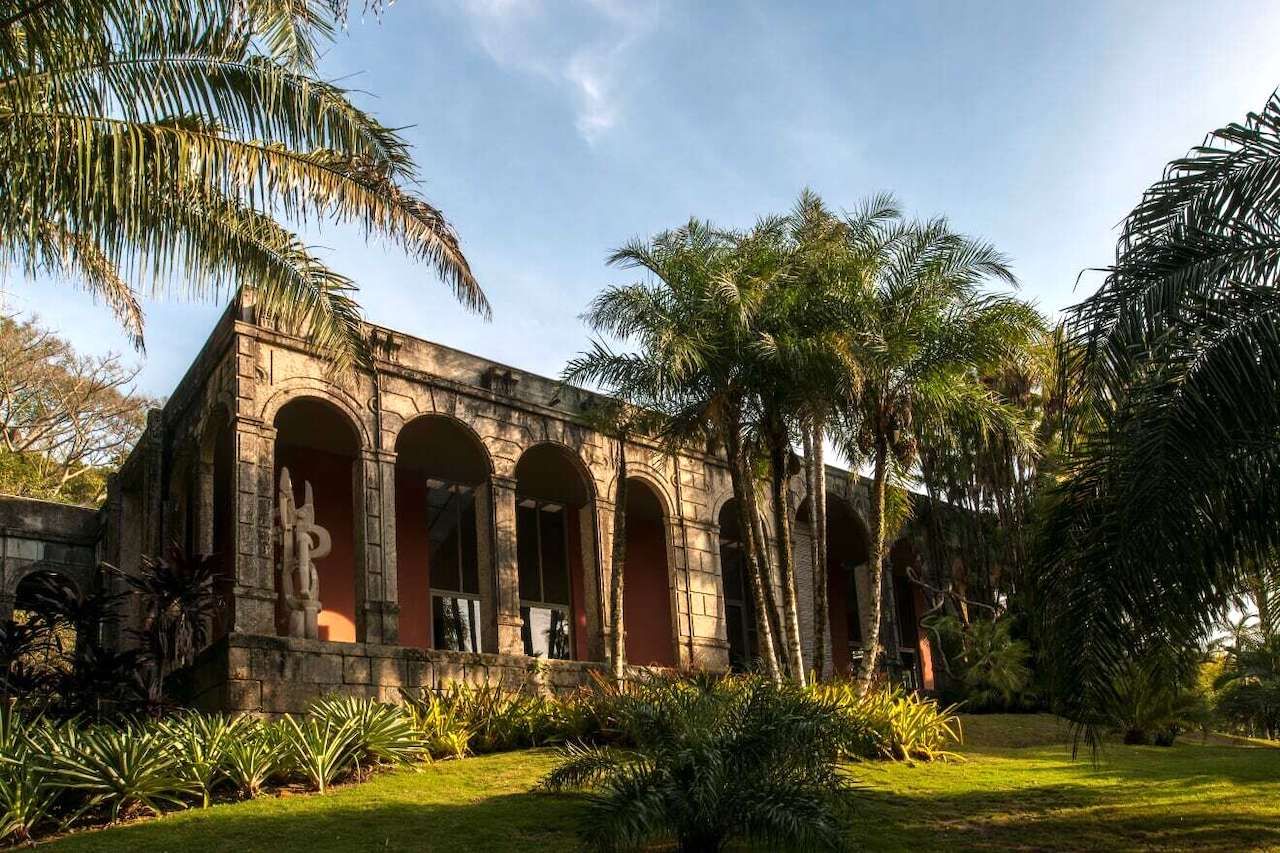
Photo: Oscar Liberal/Iphan/SRBM/UNESCO
This innovative site conveys a 40-year artistic endeavor by landscape artist Roberto Burle Marx. Situated west of Rio de Janeiro, Brazil, this work of art is part-garden, part-natural scape: characterized by sinuous forms, mass planting, architectural plant arrangements, dramatic color contrasts, and folk art elements. The project began in 1949, and today it contains over 3,500 species of tropical and subtropical flora growing in harmony with Brazil’s native vegetation.
13. The Great Spa Towns of Europe

Photo: aroundworld/Shutterstock
UNESCO selected 11 towns for this transnational heritage site, spanning Austria, Belgium, Czechia, France, Germany, Italy, and the U.K. Each town in the list was built around a natural mineral water spring, providing a natural source for the elaborate baths and resorts that lie there today. These sites bear witness to the international European spa culture that developed from 1900-1930, and its subsequent implications on the exchange of medical, scientific, and balneological practices.
14. The work of engineer Eladio Dieste: Church of Atlantida, Uruguay
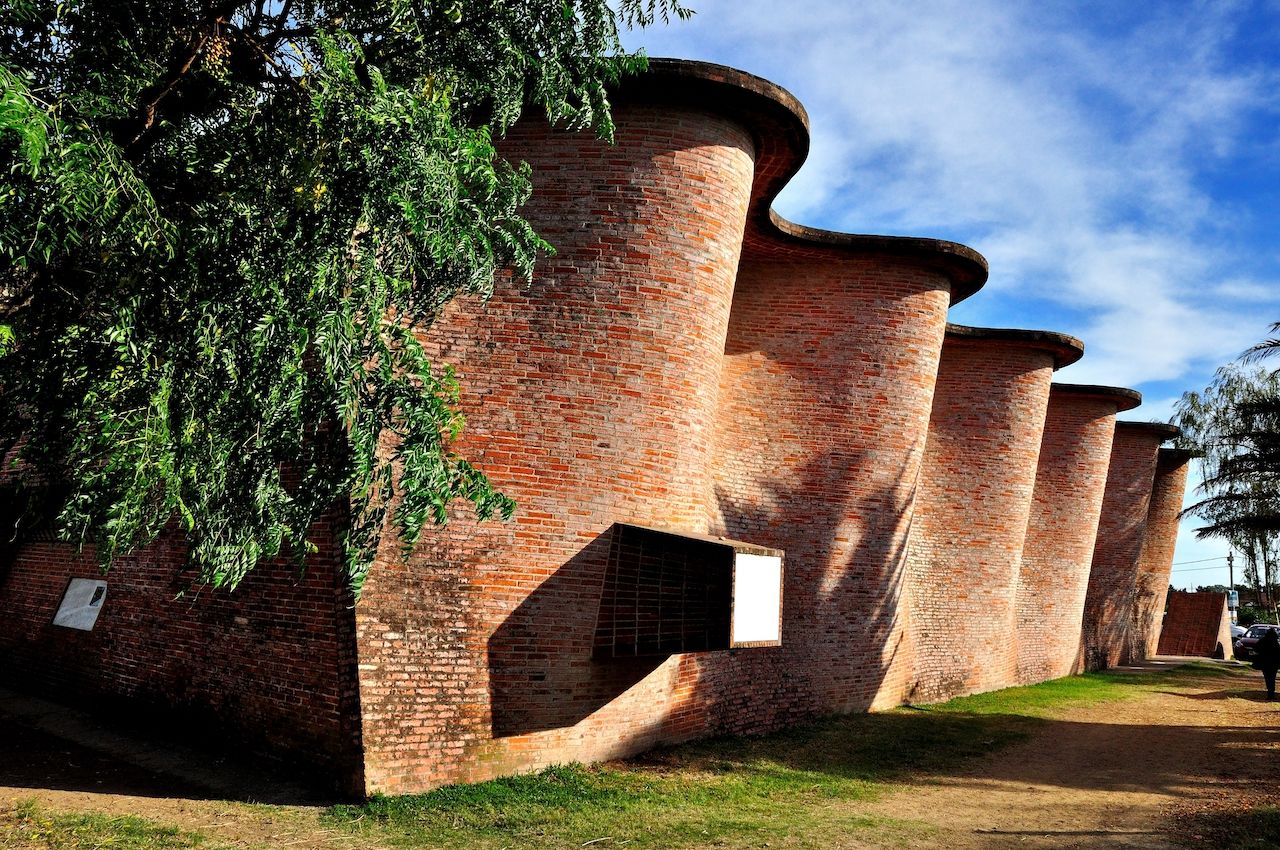
Photo: Javier Villasuso/CPCN, Getty Foundation/UNESCO
The Church of Atlantida is located roughly 30 miles from Montevideo, Uruguay. Engineer Eladio Dieste built the church with inspiration from Italian paleo-Christian and medieval religious architecture. The church is notable for its innovative arrangement of exposed and reinforced brick: The cylindrical bell tower and main walls both feature an impressive undulating pattern.
15. Trans-Iranian Railway, Iran
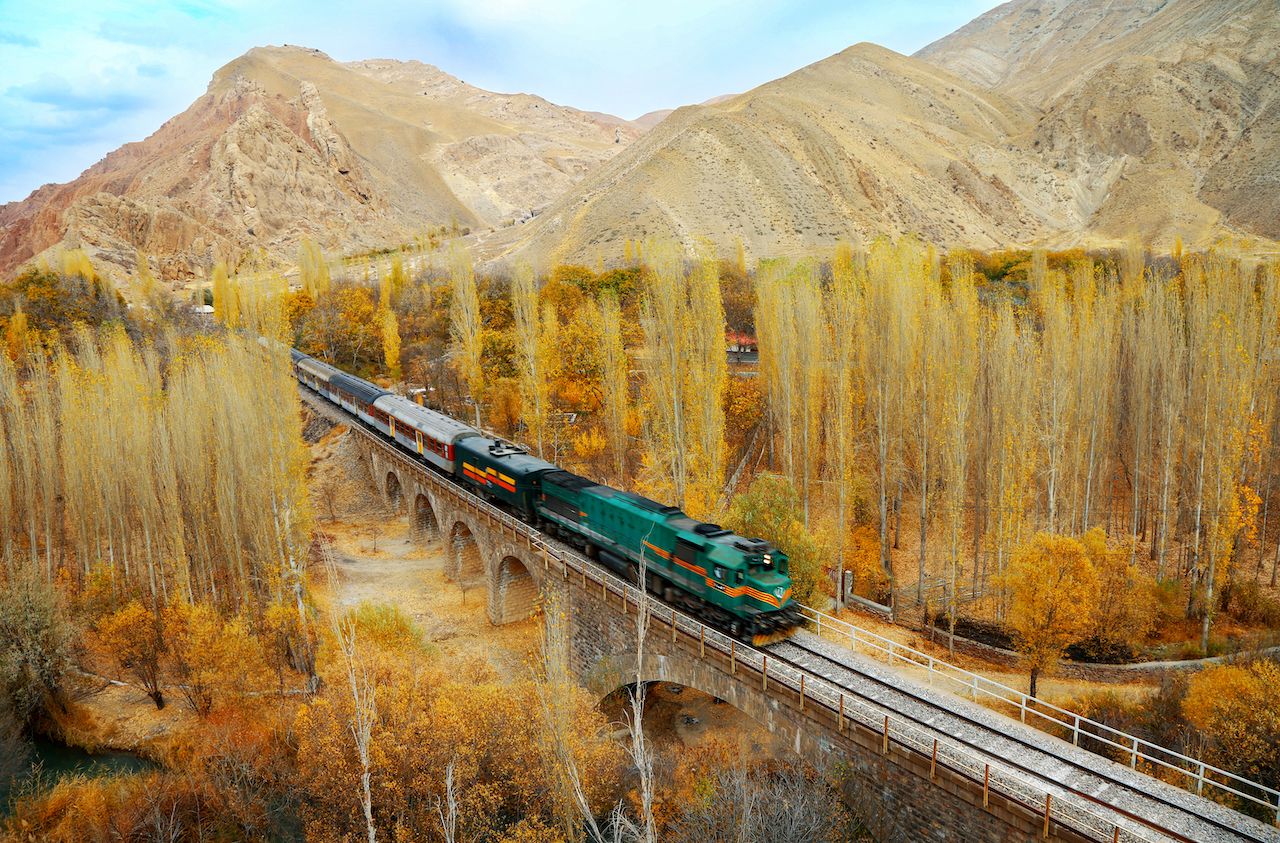
Photo: Hossein Javadi/UNESCO
As the name suggests, the Trans-Iranian Railway spans the entirety of Iran from the Caspian Sea in the northeast to the Persian Gulf in the southwest. The railway was built between 1927 and 1938 in collaboration between the Iranian government and 43 international contractors. It is notable for both its scale and the extensive engineering works required to build across two mountain ranges.
16. Ḥimā Cultural Area, Saudi Arabia
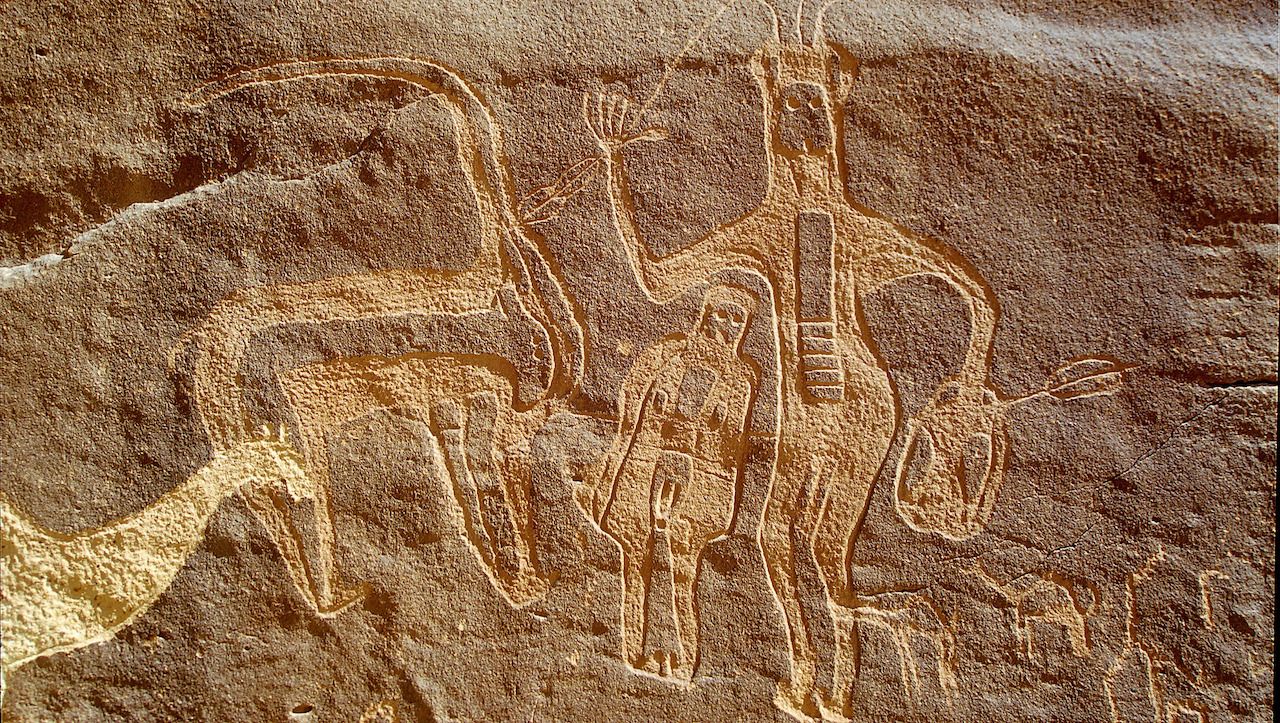
Photo: Dr. Majeed Khan/SCTH/UNESCO
This site in southwest Saudi Arabia contains a considerable collection of rock art images going back roughly 7,000 years. This is mainly due to its function as the oldest known toll station along one of the Arabian Peninsula’s major caravan routes. Over the years, travellers and armies camping on the site left behind a large assortment of inscriptions and images, including depictions of hunting, wildlife, flora, and cultural totems.
17. Amami-Oshima Island, Tokunoshima Island, Northern part of Okinawa Island, and Iriomote Island, Japan
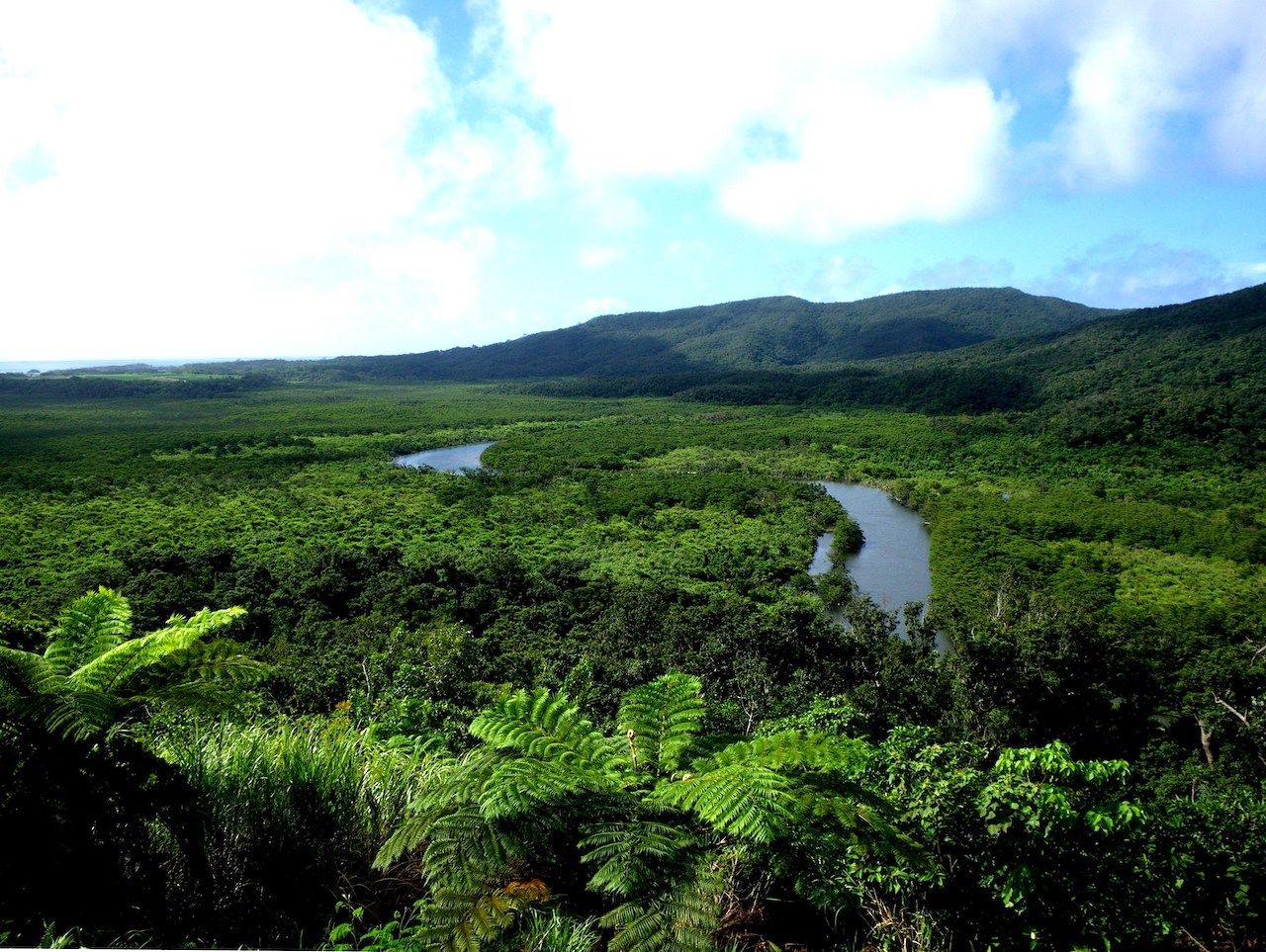
Photo: MOEJ/UNESCO
This newly-added natural property encompasses 42,698 hectares of subtropical rainforests across four islands in southwest Japan. The marked sites are completely uninhabited by humans, with a high percentage of globally-threatened endemic species such as the endangered Amami Rabbit (Pentalagus furnessi) and the endangered Ryukyu Long-haired Rat (Diplothrix legata).
18. Colchic Rainforests and Wetlands, Georgia

Photo: Paata Vardanashvili/Agency of Protected Areas/UNESCO
This naturally-occurring site exists along a 50 mile stretch on Georgia’s Black Sea coast. Also known as a ‘slice of the Amazon in Eurasia’, this is a temperate broadleaf and mixed forests ecoregion. The extremely humid climate allows for a unique, diverse range of fauna, many of which survived the glacial cycles of the Tertiary.
19. Getbol, Korean Tidal Flats
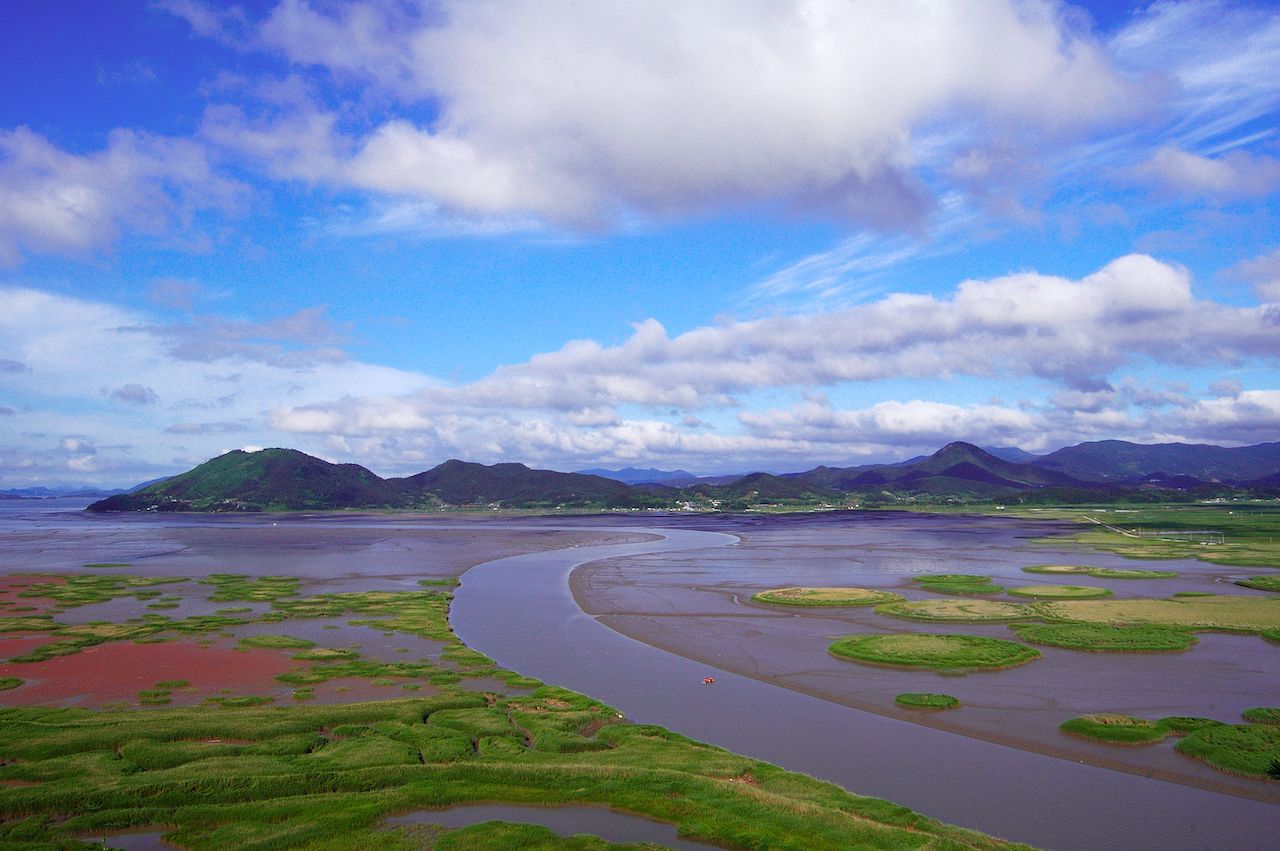
Photo: World Heritage Promotion Team of Korean Tidal Flat/UNESCO
Situated in the eastern Yellow Sea along the Republic of Korea’s southern coast, this site contains a unique combination of geological, oceanographic, and climatological conditions that have led to diverse tidal and sedimentary conditions. The above factors have also resulted in a unique array of endemic species, such as Japanese Mud Crabs (Macrophthalmus japonicus) and Yellow Sea Sand Snails (Umbonium thomasi).
20. Kaeng Krachan Forest Complex, Thailand

Photo: Bule Sky Studio/Shutterstock
The Kaeng Krachan Forest Complex is located along the Thailand side of the Tenasserim mountain range, at the crossroads between the Himalayan, Indochina, and Sumatran faunal and floral realms. This unique juncture point has spawned an impressive level of biodiversity, including many globally endangered species. For example, this site is home to the critically endangered Siamese Crocodile (Crocodylus siamensis), the endangered Asiatic Wild Dog (Cuon alpinus), the endangered Asian Giant Tortoise (Manouria emys), and several other vulnerable species of birds and mammals.
21. As-Salt — The Place of Tolerance and Urban Hospitality, Jordan
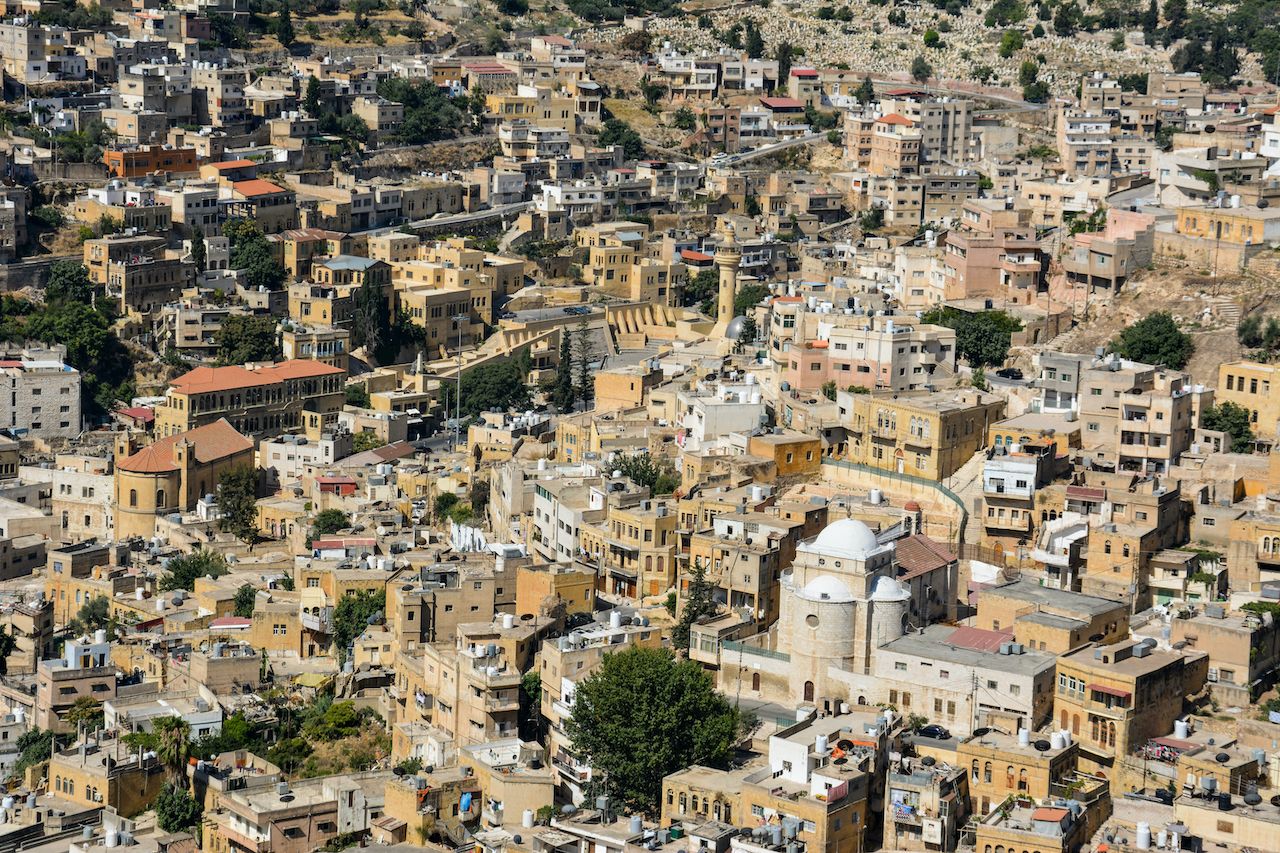
Photo: Rami Daher/TURATH: Architecture and Urban Design Consultants/UNESCO
The city of As-Salt, located in west-central Jordan, was an important trade link during the late Ottoman period (1860s-1920s). Many wealthy merchants from Nablus, Syria, and Lebanon settled here, attracting many talented craftsmen who transformed the small rural settlement into a thriving blend of European Art Nouveau, Neo-colonial, and local architectural traditions. The city’s non-segregated layout also reflects the relatively peaceful relations between Muslims and Christians during the time period.
22. Cultural Landscape of Hawraman/Uramanat, Iran
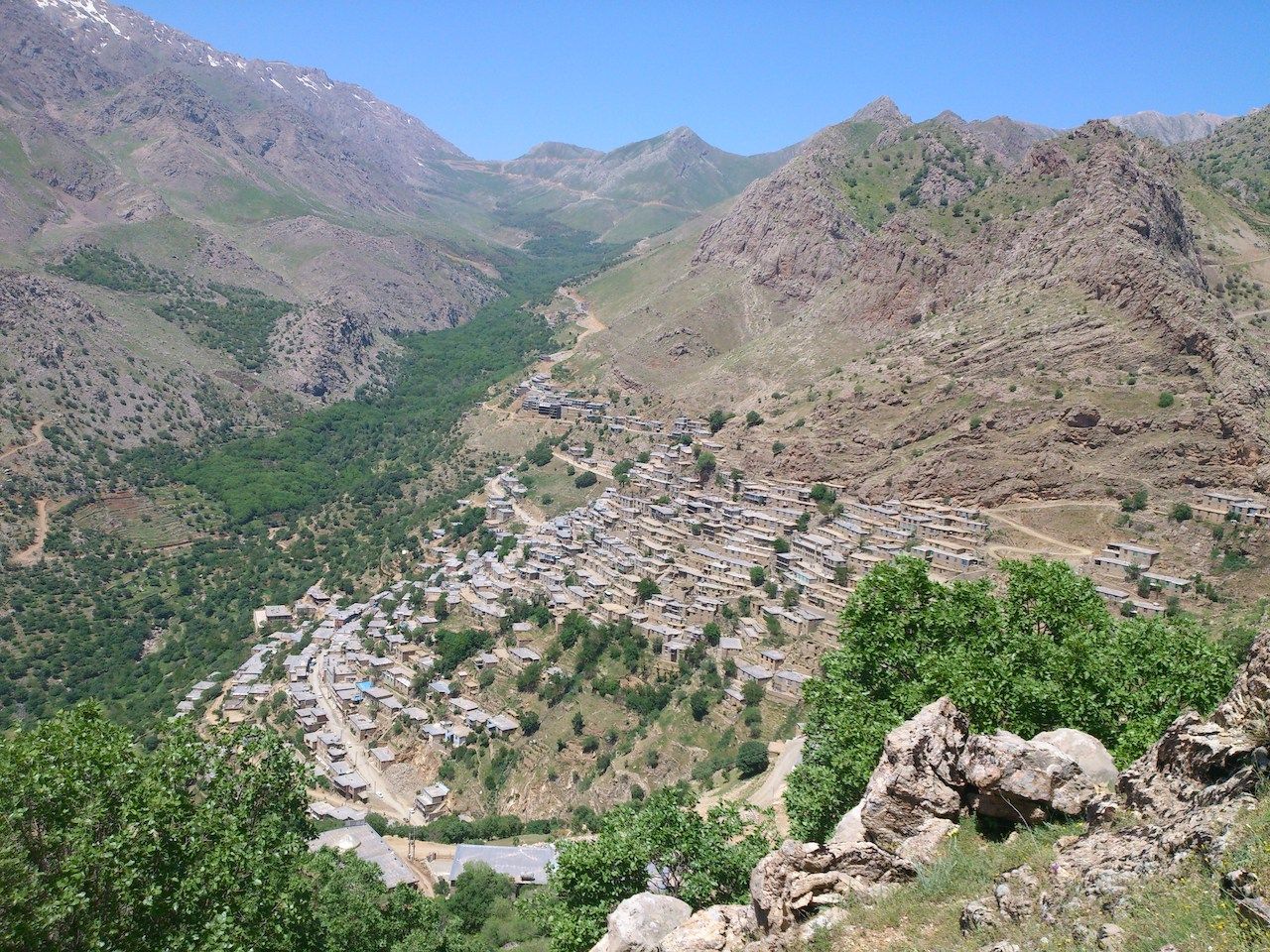
Photo: Hamid Binaei Faa/UNESCO
This remote, mountainous landscape in Iran has been inhabited by the Hawrami people since about 3000 BCE. The Hawrami, a semi-nomadic Kurdish tribe, have harnessed the terrain here with tiered steep-stone planning and dry-stone terrace gardening. Their uninterrupted presence in the landscape is also evidenced by stone tools, permanent and temporary settlement ruins, cemeteries, roads, castles, and more.
23. Dholavira: a Harappan City, India
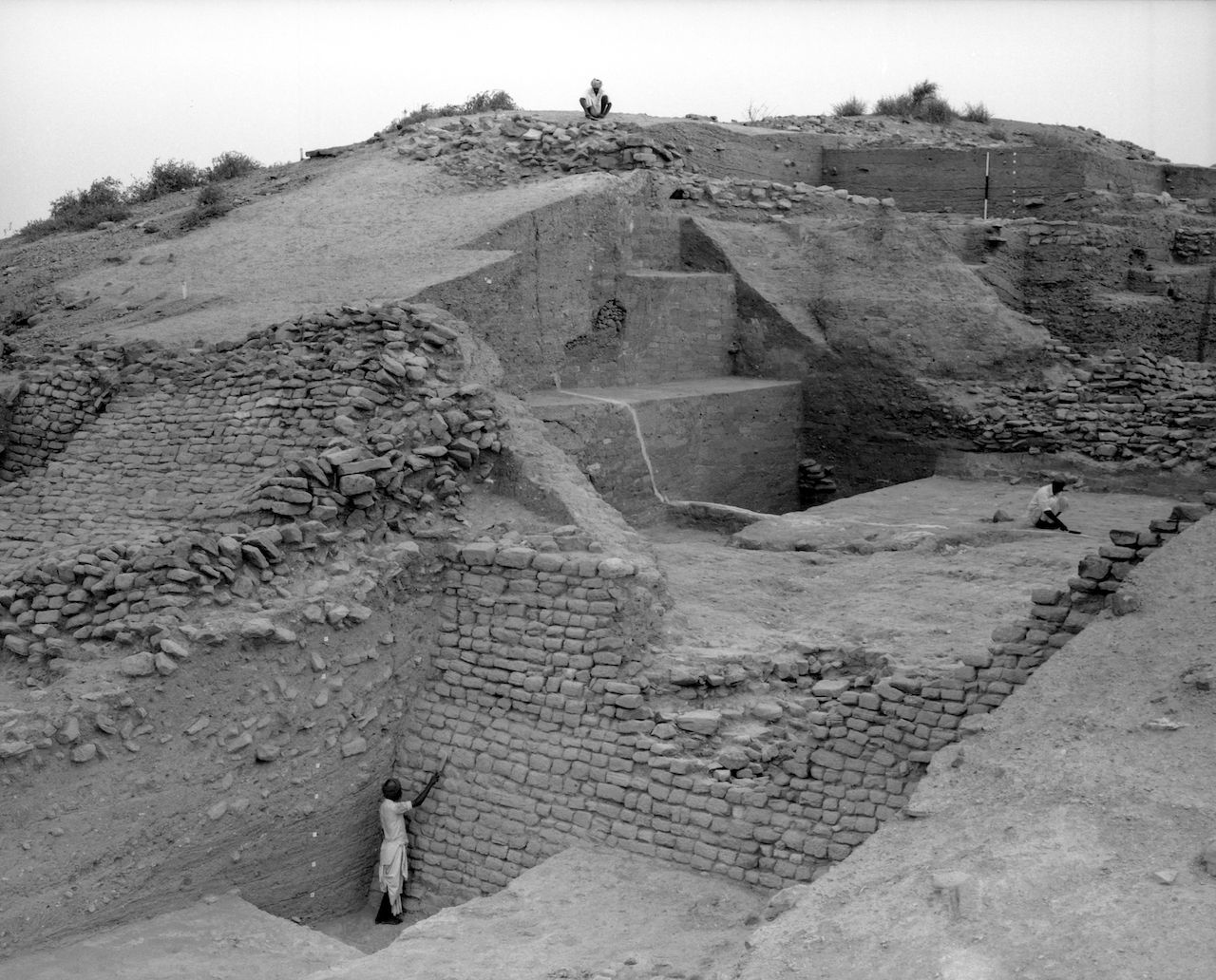
Photo: ASI/UNESCO
The ancient city of Dholavira is located on Khadir Island, within the State of Gujarat. The site was occupied between 3000-1500 BCE and is one of the best preserved urban settlements from the period in Southeast Asia. Inside the walled city, there’s an ancient cemetery, a heavily fortified castle, and a sophisticated aqueduct system for routing and preserving water within the harsh, arid environment.
24. Frontiers of the Roman Empire — The Lower German Limes, Germany, the Netherlands

Photo: Stichting Tijdlijn/Nederlandse Limes Samenwerking/UNESCO
This site follows the left bank of the lower Rhine River for roughly 250 miles, from Germany’s Rhenish Massif to the North Sea coast in the Netherlands. It contains remnants of the Roman Empire’s frontier, including military bases, forts, roads, aqueducts, cemeteries, and more. In the second century CE, the empire stretched across Europe, the Near East, and North Africa.
25. Jomon Prehistoric Sites, Japan
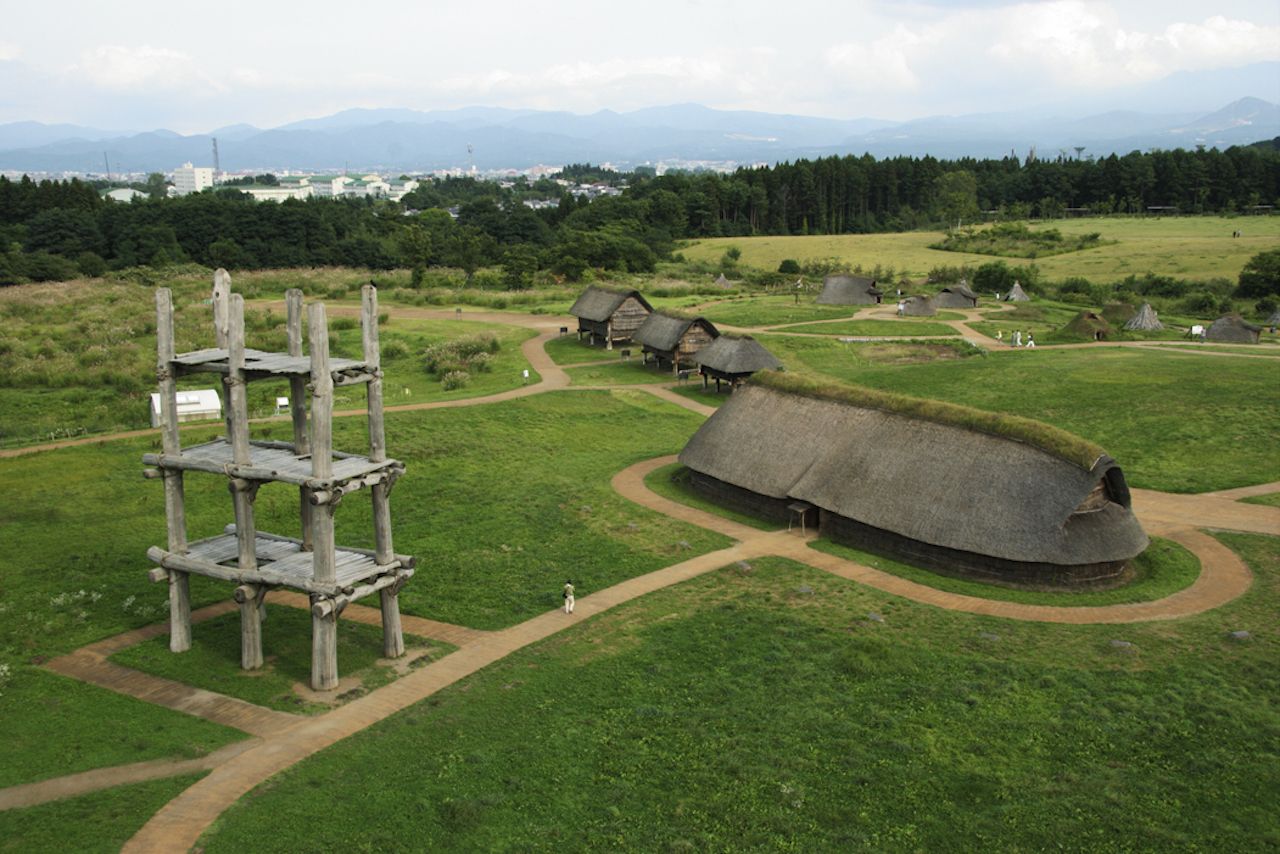
Photo: Aomori Prefecture Board of Education (Cultural Property Protection Division)/Sannai Maruyama Jomon Culture Center/UNESCO
This property consists of 17 archeological sites scattered across northern Japan. The sites contain remnants spanning roughly 10,000 years of the sedentary hunter-fisher-gatherer Jomon culture. The remaining artifacts signify a complex spiritual belief system, with various ritual places like earthworks and large stone circles.
26. Nice, Winter Resort Town of the Riviera, France
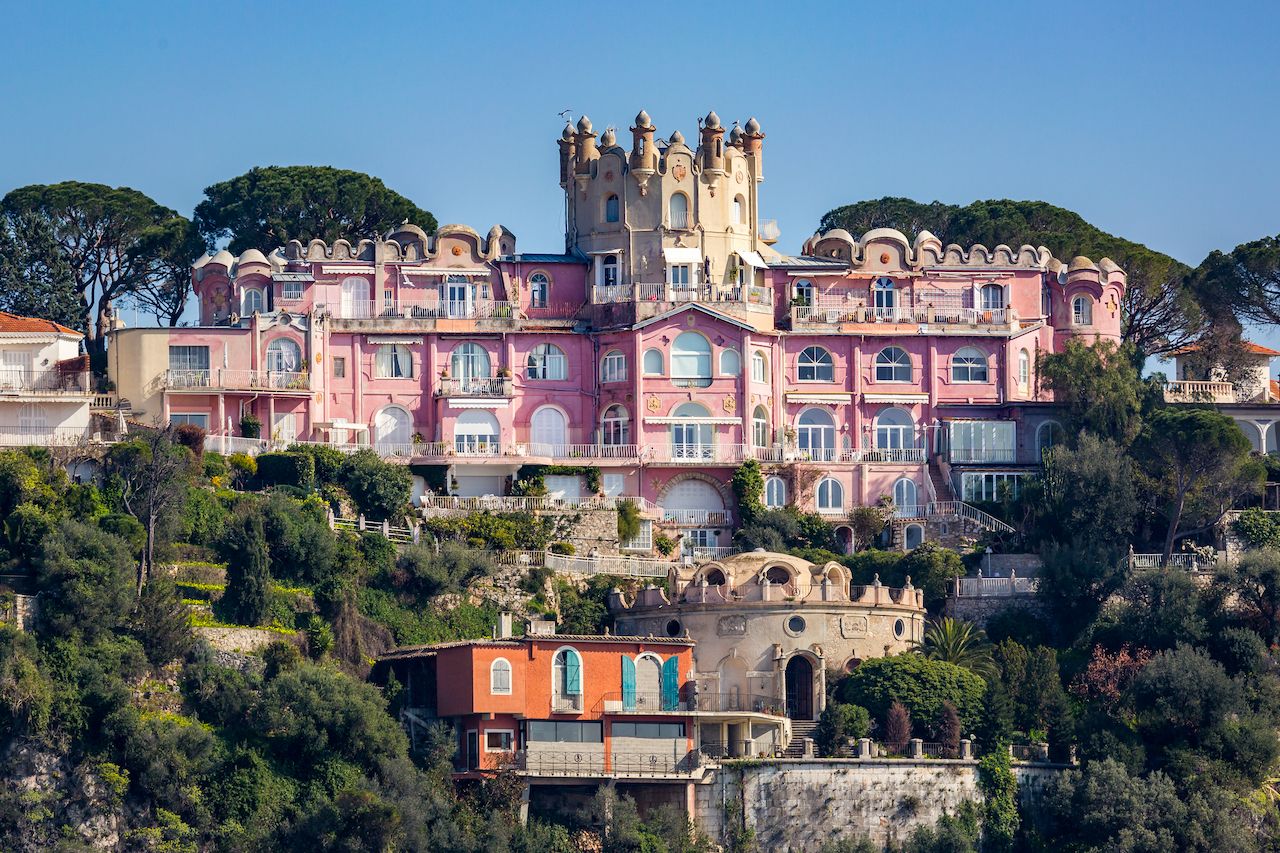
Photo: Service Photo/Ville de Nice/UNESCO
This Mediterranean city lies on France’s southeast coast, near the Italian border. From the middle of the 18th century, Nice grew in prominence as a winter resort town for aristocratic and upper-class Europeans. The diverse cultural influences of the winter residents and the desire to make the most of the seasonal conditions have resulted in an elegant, world-renowned destination with impressive architecture from various periods and styles.
27. Petroglyphs of Lake Onega and the White Sea, Russia
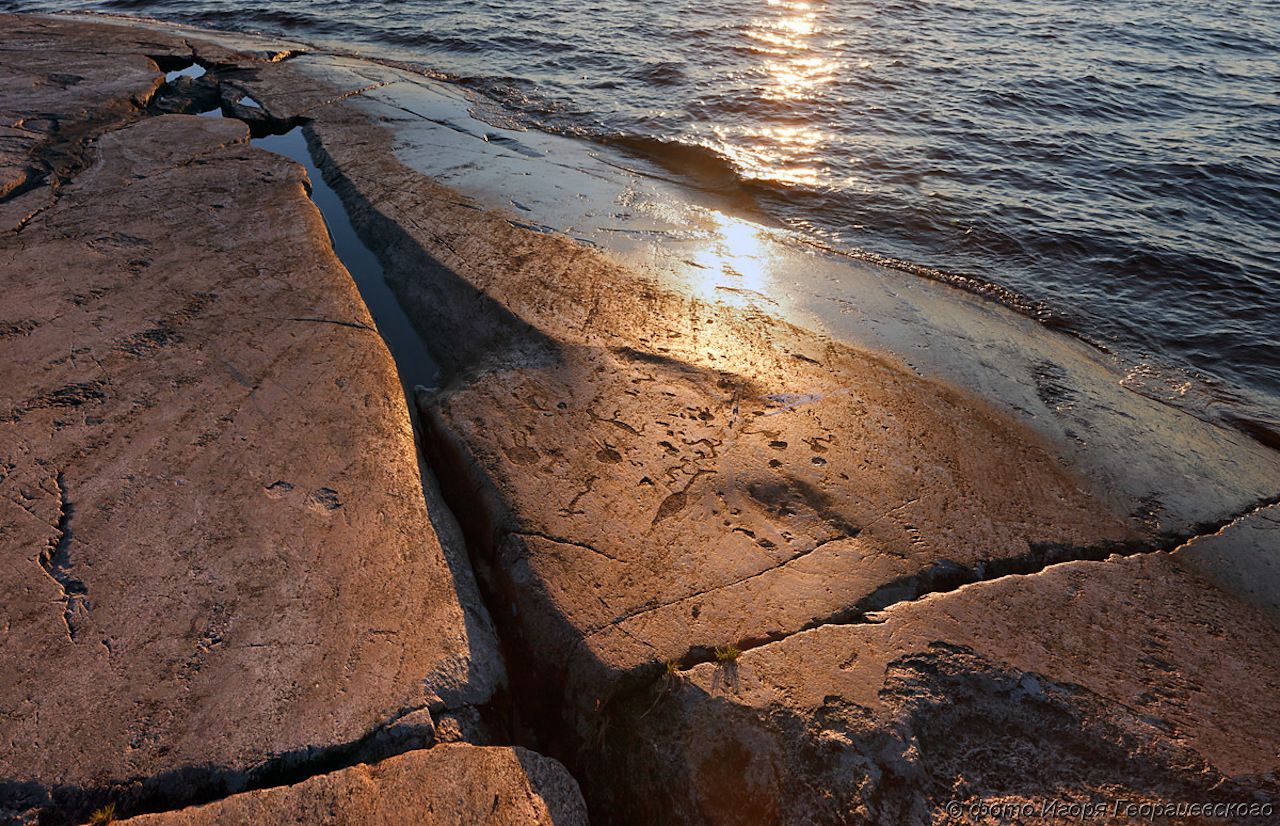
Photo: Aomori Prefecture Board of Education (Cultural Property Protection Division)/Sannai Maruyama Jomon Culture Center/UNESCO
This serial site, located in Russia’s Republic of Karelia, contains 4,500 Neolithic petroglyphs from roughly 6,000 years ago. There are 33 distinct locations within this listing, containing a diverse array of imagery including birds, animals, anthropomorphic figures, hunters, sailing scenes, and more. The drawings testify to the creativity of the Stone Age.
28. Settlement and Artificial Mummification of the Chinchorro Culture in the Arica and Parinacota Region, Chile
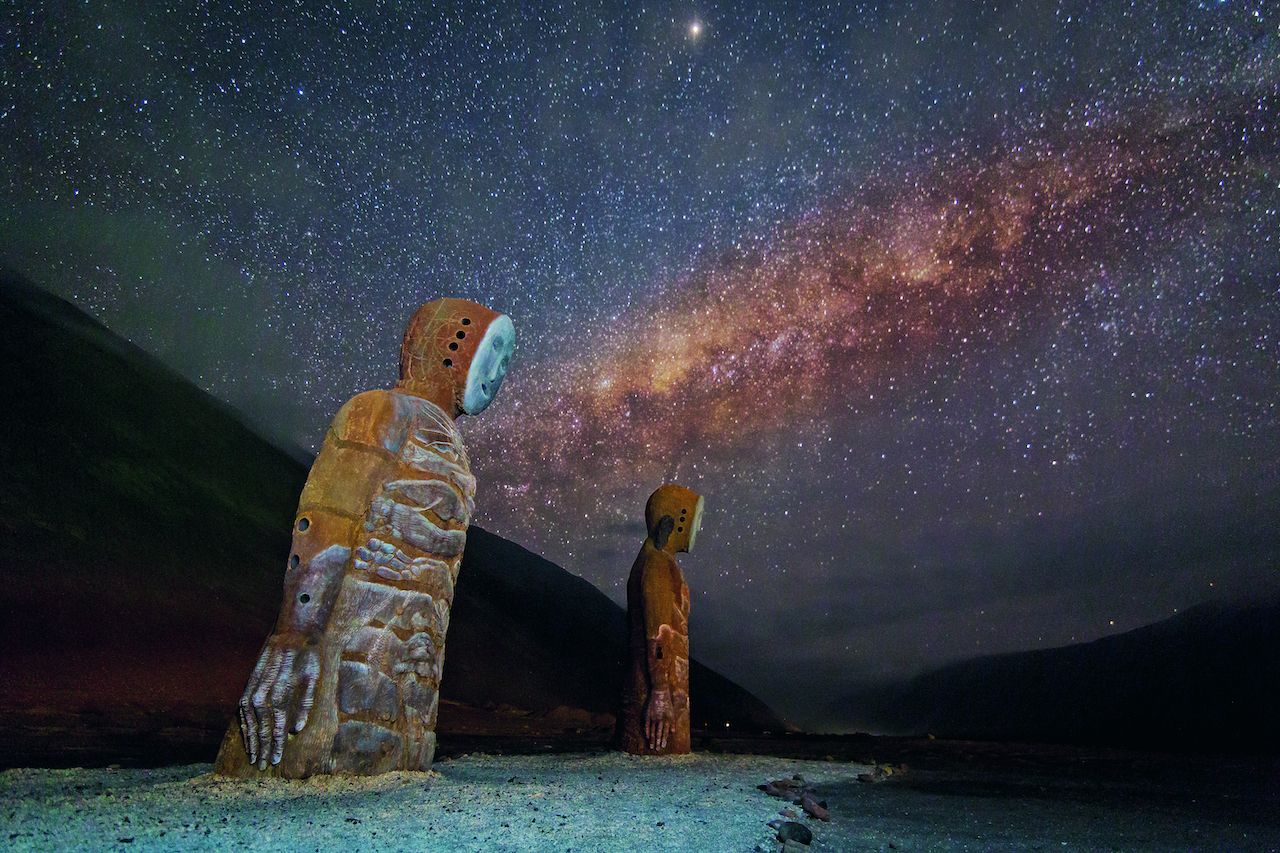
Photo: Carlos Chow/Regional Program for Protection of the Chinchorro Sites/UNESCO
The Chinchorro people were marine hunter-gatherers who lived in Chile’s Atacama Desert from roughly 5450-890 BCE. This newly-inscribed property contains a collection of three sites representing unique facets of their culture. The sites contain the oldest known evidence of artificial mummification of bodies, as well as bodies naturally preserved through environmental conditions. These mummies possess distinct aesthetic qualities that reflect the presumed importance of death in Chinchorro society.
29. ShUM Sites of Speyer, Worms, and Mainz, Germany

Photo: Ernst, Jurgen/Generaldirektion Kulturelles Erbe Rheinland-Pfalz/UNESCO
This serial site spans three German cities: Speyer, Worms, and Mainz. It contains significant Jewish structures from the medieval era, like the Speyer Jewry-Court, the Worms Synagogue Compound, and the Old Jewish Cemetery in Mainz. These sites reflect the early emergence of 12th and 13th -century Ashkenaz customs, which served as prototypes for later Jewish community and religious buildings in Europe.
30. Sudanese style mosques, Ivory Coast
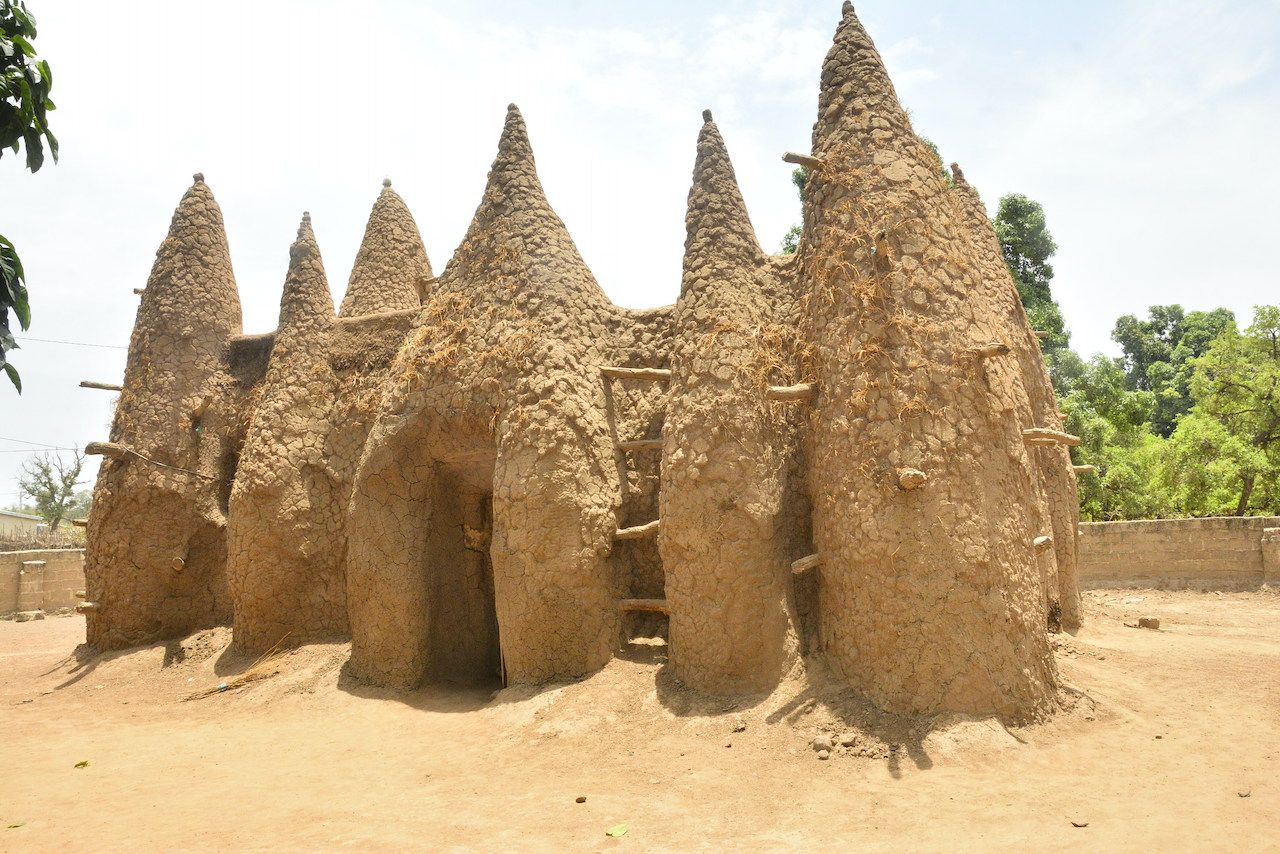
Photo: OIPC/UNESCO
This site in northern Côte d’Ivoire (Ivory Coast) contains eight small adobe mosques, all characterized by protruding timbers, vertical buttresses, and tapering minarets. The distinct style developed between the 17th and 19th centuries as Islamic customs spread along expanding trans-Saharan mercantile routes.
31. The Porticoes of Bologna, Italy
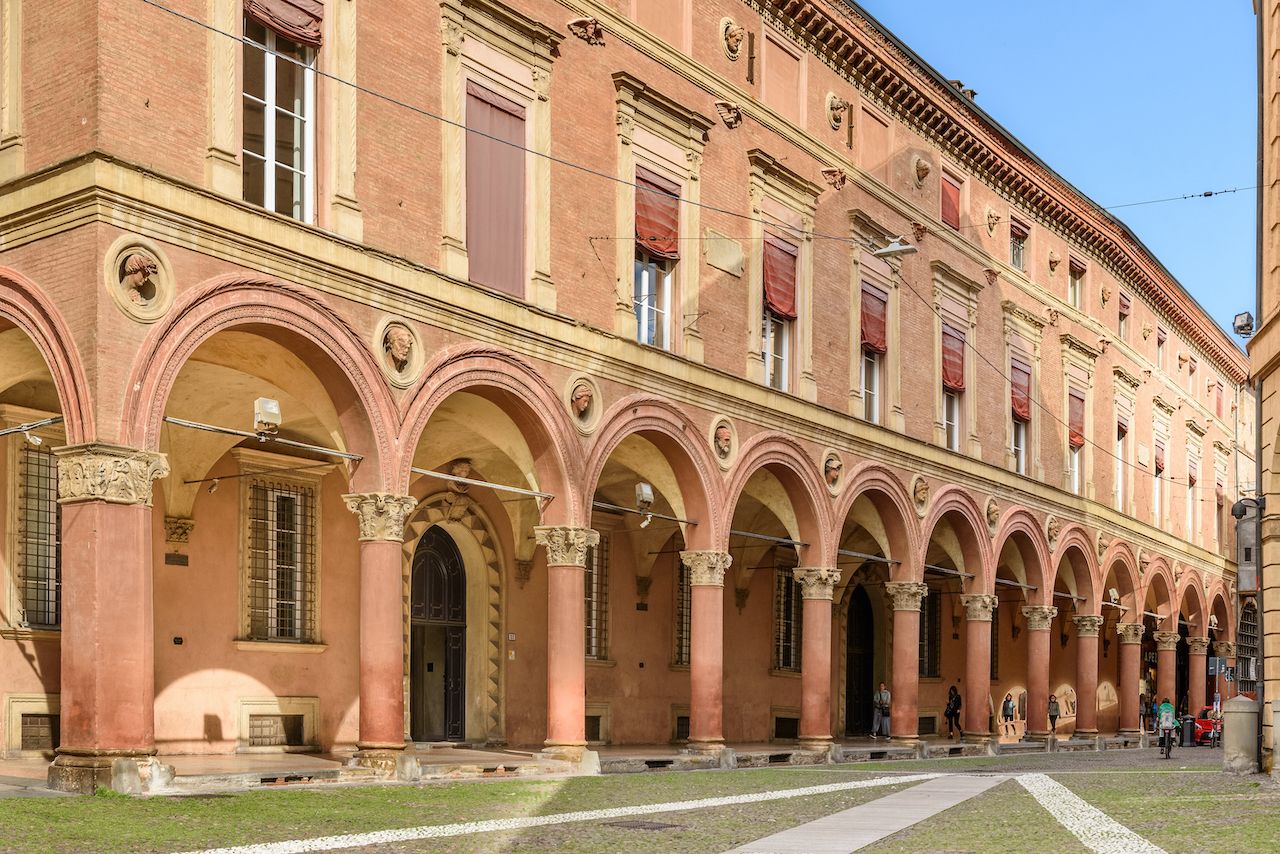
Photo: Giorgio Bianchi/Giorgio Bianchi – Comune di Bologna/UNESCO
The porticoes of Bologna, Italy, function as sheltered walkways and as prime locations for merchant activity. The selected porticoes span several centuries, and are made from a variety of materials including wood, stone, brick, and concrete. They often serve as a unique, semi-private space for social gathering, and can be considered a motif of Bologna’s urban identity.
32. The Slate Landscape of Northwest Wales

Photo: RCAHMW/Crown copyright RCAHMW/UNESCO
Wale’s Slate Landscape illustrates the drastic effects of quarrying and mining. During the Industrial Revolution (1780-1914), landowners and capital investors transformed what was an agricultural landscape into a massive slate production complex. The territory is made up of six components, each of which contain relict quarries and mines, domestic settlements, gardens, railway systems, and ports.
33. The works of Joze Plecnik in Ljubljana – Human Centered Urban Design
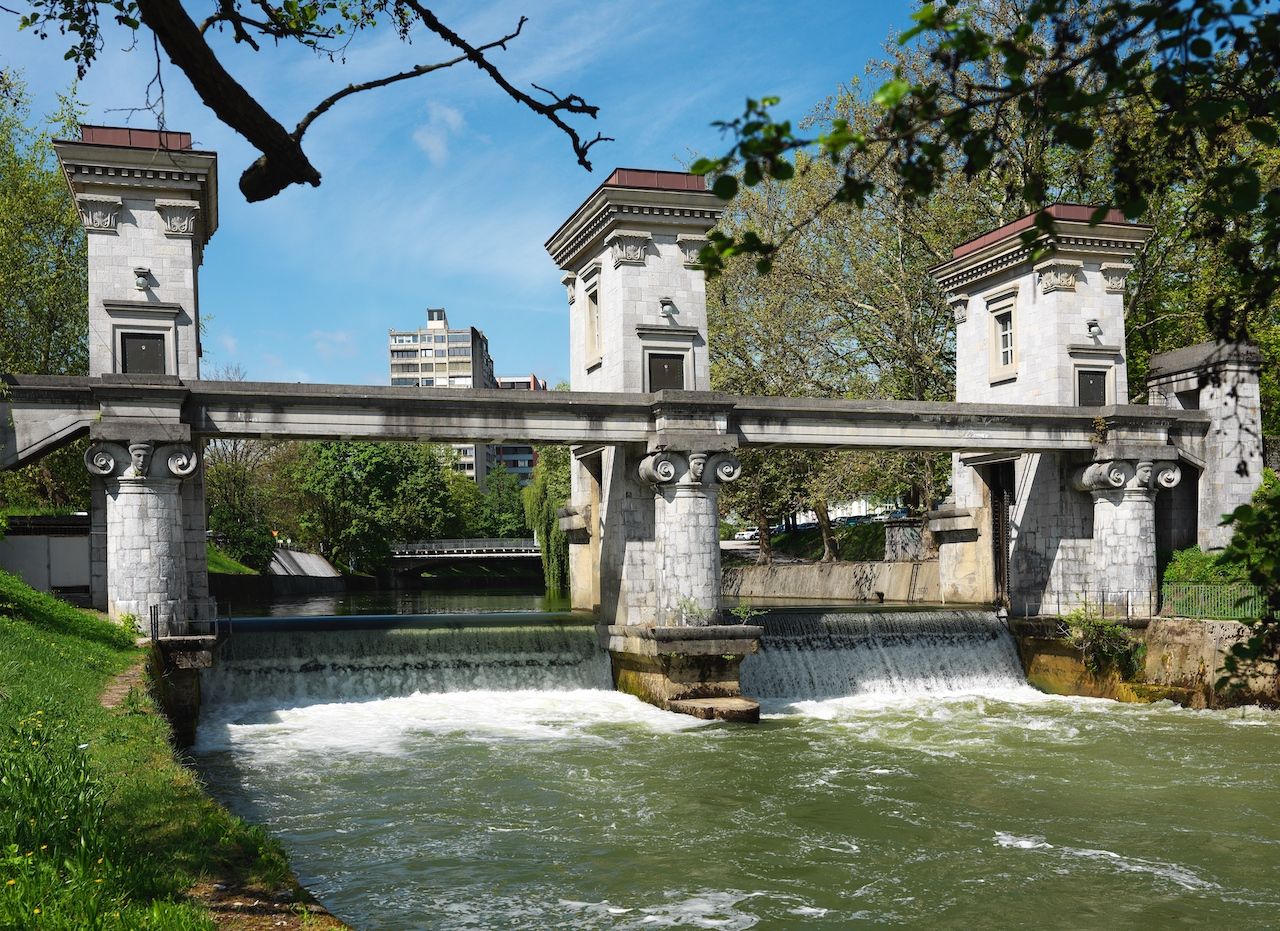
Photo: Matevz Paternoster/Museum and Galleries of Ljubljana/UNESCO
Plecnik’s pre-war work exists in a unique time period, after the dissolution of the Austo-Hungarian Empire but before the first World War. In this middle space, the people of Ljubljana were contemplating their new identity as the capital of Slovenia. Plecnik’s work expresses a profoundly human vision for the city, with many public squares, parks, promenades, and institutions thoughtfully integrated with the city’s pre-existing urban and natural structures.
34. Ivindo National Park, Gabon
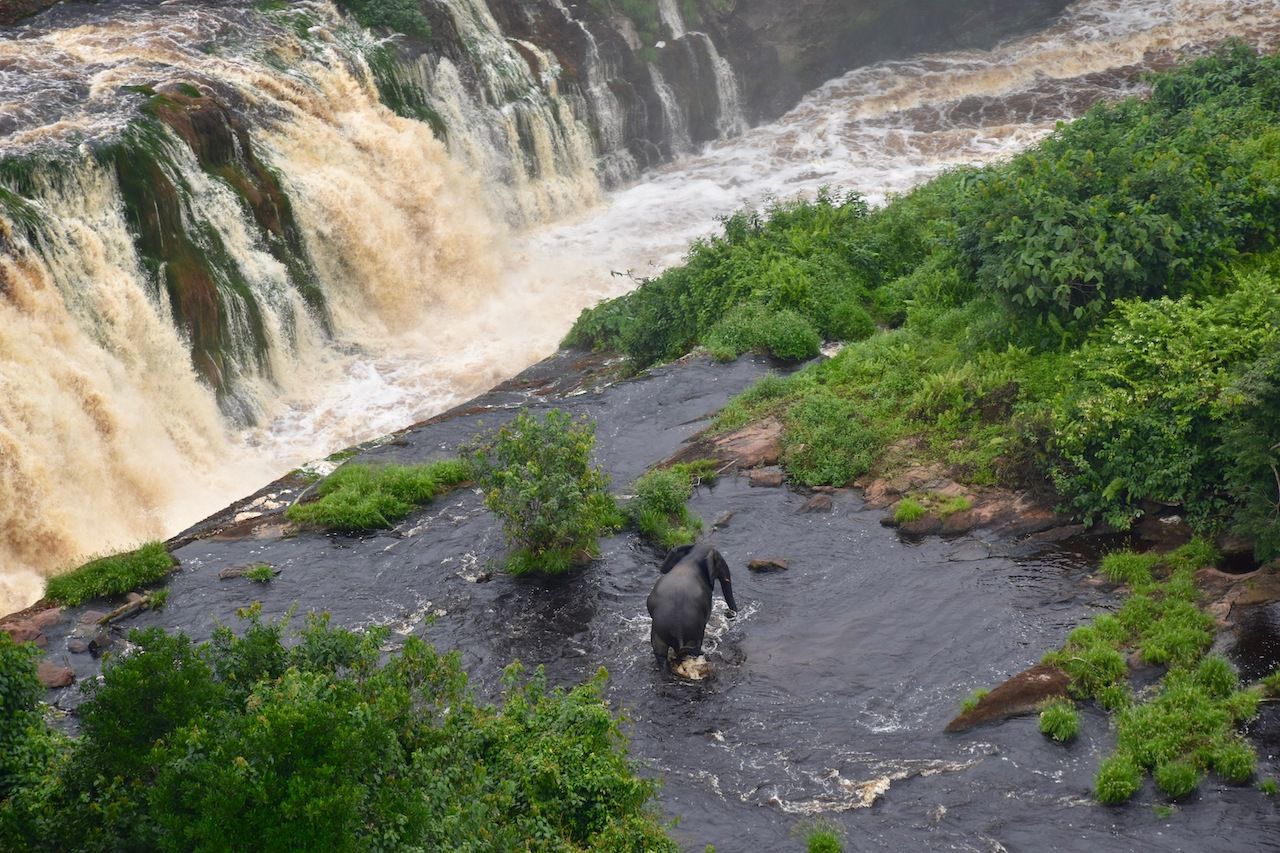
Photo: Lee White/UNESCO
Ivindo National Park is located on the equator, in Northern Gabon. The largely untouched site contains a nearly 300,000 hectare network of blackwater rivers, rapids, and waterfalls. The unique environment hosts a large array of endemic flora and fauna, many of which are endangered, such as the slender-snouted crocodiles (Mecistops cataphractus), forest elephant (Loxodonta cyclotis), western lowland gorilla (Gorilla gorilla), and the endangered chimpanzee (Pan troglodytes).